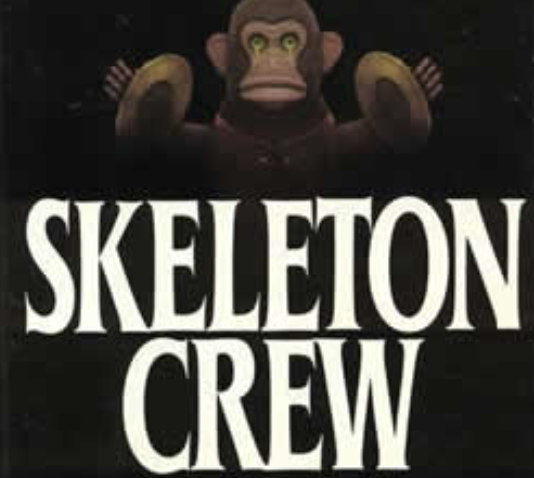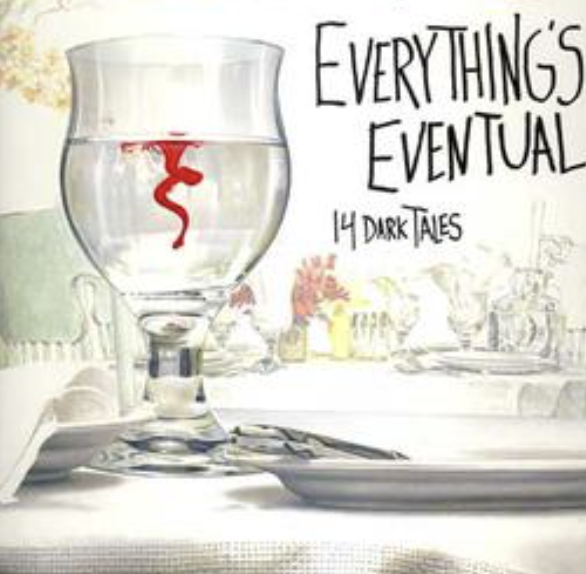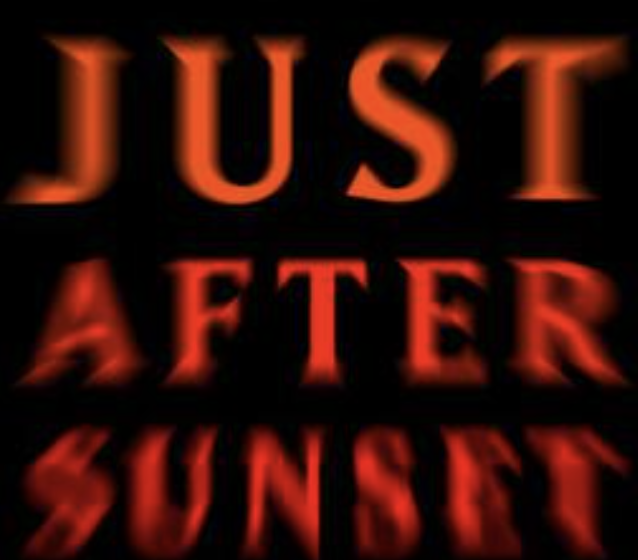10 Stephen King Stories Perfect for Any Season

Though Stephen King is perhaps best known for scaring us with novels that could also serve as doorstoppers, the Master of Horror has also written many terrifying short stories. Since releasing Night Shift in 1978, a tome that includes classics like “The Boogeyman,” “The Mangler,” and “Children of the Corn,” Stephen King has published five additional collections and recently teased the forthcoming You Like It Darker. The bestselling author’s novels are filled with both horror and heart, capable of twisting the emotional knife while cutting our knees out from under us.
However, with a shorter format, Stephen King often delights in the grisly, the macabre, and the cruel, creating vicious literary images without the necessity of a satisfying conclusion. The following 10 short stories are bite-sized tales of terror just begging to be read around a campfire or enjoyed in a cozy chair on a dark and stormy night.

“Sometimes They Come Back” — Night Shift
Jim Norman is recovering from a psychotic break when he takes a job teaching English at a small-town high school. Over Christmas vacation, one of his students dies in a hit-and-run accident and Jim returns to find he recognizes the boy now sitting at the vacated desk. Robert Lawson is a greaser who bears a striking resemblance to one of the teens who murdered his older brother many years ago. As Robert’s friends slowly replace more of Jim’s students, the frightened teacher becomes convinced that something has come back for him from beyond the grave, determined to finish the job once and for all.
In addition to an evocative title, “Sometimes They Come Back” is classic Stephen King. The protagonist is a troubled high school English teacher and the villains are a nasty group of outsized bullies. Set mostly in the halls of a high school, the story has distinct autumnal vibes despite the fact that it takes place during the winter semester. A gruesome final act unleashes an even darker evil that may prove worse than anything Lawson and his friends can dish out.
“The Raft” — Skeleton Crew
“The Raft” is not only a perfect story for autumn, but it could also serve as a cautionary tale against refusing to embrace the changing seasons. On a warm October day, a group of college friends make an impromptu trip to a nearby lake and attempt to recapture their youth by swimming out to the raft in its center. Unfortunately, the tranquil waters contain a deadly creature awakened by the autumn chill. Stranded on the floating platform, the four friends find themselves hunted by a mysterious entity lurking in the water.
This story not only delivers perfect spooky vibes as the sun sets and rises on the deserted lake, but it also provides some of King’s most grisly deaths when the inky killer reaches up through the raft’s wooden slats to reach its prey. Adapted for a segment in Michael Gornick’s Creepshow 2, some elements of the story have not aged well, but “The Raft” still delivers a powerful punch and manages to make us grateful that the days of summer are finally at an end.

“Gramma” — Skeleton Crew
One of King’s only witch stories, “Gramma” is a masterclass in mounting dread and atmospheric horror. Left alone for the afternoon with his elderly grandmother, a young boy named George tries to prove his responsibility by doing everything right. This includes making her special dinners and serving her tea in the hospital-like bedroom where she will live out her final days. As the afternoon creeps closer into night, George pieces together overheard memories of his mother’s childhood and begins to fear that the senile old woman may have a few more tricks up her sleeve.
Taking place over the course of a single afternoon, King builds palpable tension by making the simple act of caring for an elderly relative feel like a ticking bomb. The story unfolds through the eyes of a child, dragging up our own remembered fears of the first times we were allowed to stay home by ourselves. With a killer ending and fascinating lore, “Gramma” may be one of the scariest short stories in King’s entire catalog.
“The Reaper’s Image” — Skeleton Crew
The Samuel Claggert Museum mostly houses dusty antiques and minor works of art, but its most famous exhibit is kept locked away in the attic. The Delver Glass is an antique mirror made with a minute distortive quality that causes the viewer to see a slightly amplified version of reality. In addition to this priceless design, the mirror also has a troubled history. Every once in a while, someone will look into the mirror and notice what appears to be a tiny, black flaw in the upper corner. Said to be the image of the Grim Reaper, this unfortunate soul will pass out of this world soon after, disappearing without a trace.
Clocking in under ten pages, “The Reaper’s Image” gives us a taste of this brutal backstory and the mirror’s many victims before delivering one hell of a stinger ending. A criminally underread title in King’s canon, this short but haunting story causes us to wonder if we could possibly resist the temptation to look into the devilish glass and what we might see if we do chance a glimpse.

“Home Delivery” — Nightmares & Dreamscapes
One of King’s rare forays into the zombie subgenre, “Home Delivery” is a terrifying story disguised as a slice of small-town Americana. Maddie Pace is still grieving the loss of her husband in a deep-sea fishing accident when corpses around the world begin to reanimate and stalk the living. Watching civilization fall from her small island community, Maddie and her neighbors eventually find themselves under attack from undead loved ones creeping out of the local cemetery. Maddie’s own husband returns from his watery grave in a harrowing scene that threatens the life of her unborn child. This timid widow must gain the confidence she previously thought herself incapable of in order to survive this nightmarish worldwide event.
First published in Book of the Dead, a zombie anthology introduced by George A. Romero, “Home Delivery” is a surprisingly touching dip into zombie lore. Stephen King introduces us to his indecisive heroine, spending just as much time on her struggle to choose an entre as the fight with her undead husband. King excels at writing about small-town life and brings the zombie apocalypse to us one household at a time.
“Crouch End” — Nightmares & Dreamscapes
King’s take on the Cthulhu Mythos, “Crouch End” is a nightmare unfolding in broad daylight. While minding the police station in the titular London neighborhood, two constables watch as Doris Freeman stumbles through the precinct doors desperate to find her missing husband. Vacationing in the UK, this American couple has lost their way in the mysterious Crouch End and accidentally wandered into another dimension. It seems this urban area was built on a place of ritual sacrifice and the boundary between worlds remains thin. Doris may survive her encounter with The Goat With a Thousand Young, but her life will never again be the same.
Inspired by an evening Stephen King and his family spent with fellow horror novelist Peter Straub in the real Crouch End, the story has the feel of reality even as Doris and her husband descend into hell. Tim Curry reads an audio version in Nightmares & Dreamscapes, Volume I, allowing us to hear this terrifying tale brought to life by the original Pennywise the Dancing Clown.

“1408” — Everything’s Eventual
King’s most famous hotel room is undoubtedly the Overlook’s 217 (237 for Kubrick fans), but another suite may be even more deadly. “1408” begins in the lobby of the Dolphin Hotel as journalist Mike Enslin checks into the dangerous room to research his forthcoming book Ten Nights in Ten Haunted Hotel Rooms. Hotel manager Mr. Olin attempts to dissuade him from entering the room, citing numerous accounts of injury and death occurring within. But Mike will not be deterred. The second half of the story follows the hellish 70 minutes spent inside 1408 as whatever lurks behind the walls slowly begins to eat away at his sanity.
To quote Mr. Olin, “… there are no ghosts in room 1408 and never have been ….” but whatever monstrous creature uses the room as a doorway between worlds enjoys playing with its food. Told in two parts, the story feels like the best kind of ghost-hunting adventure as Olin delivers a thrilling monologue detailing the room’s haunting history before Enslin crosses the threshold to experience the horror for himself.
“Riding the Bullet” — Everything’s Eventual
While hitchhiking to the bedside of his hospitalized mother, college student Alan Parker wanders into a quaint cemetery lit by an ominous moon. After tripping over the grave of a deceased hotrod named George Staub, Alan accepts a ride from the next passing car only to realize he’s being driven along by the dead man’s corpse. Purporting to be a messenger from hell, Staub offers Alan an impossible choice: his life or the life of his mother. Alan has just a few moments to decide which of them will end up “riding the bullet” between this world and the next.
King’s internet debut, this novella was downloaded more than 400,000 times in 24 hours, making the Master of Horror one of the first creators to break the internet. Though it centers on themes of morality and guilt, King’s story is a perfect tale for the autumnal season. Alan’s ordeal begins while wandering through an eerie graveyard guided only by the light of a harvest moon. George also offers nightmarish fun as the grisly corpse begins to decompose before Alan’s eyes.

“The Cat From Hell” — Just After Sunset
While cats can be adorable balls of cuddly love, they can also be vicious killers who stalk and kill their unsuspecting prey. This particular cat from hell may be an emissary from hell sent on a deadly mission of revenge. Halston is a hitman contracted by the last surviving member of a wealthy family who built their fortune in the pharmaceutical industry. After decades of testing on animals, this single family has tortured and killed thousands of cats prompting a feline assassin to pick off the bloodline one by one. Dismissing his employer as a senile kook, Halston sets off to destroy the cat, but finds that this job may be more difficult than expected.
A curio in and of itself, Stephen King published the first 500 words of the story in Cavalier followed by a challenge to readers to finish the story. Enamored with the assignment, King wrote his own ending, one that proves to be just as gruesome as it is chilling. The winning entry along with King’s grisly conclusion was published later that year before finally making its way into King’s 2008 collection. In addition to this creepy cat, the story is classic Vintage Stephen King, a bizarre setup executed with unsettling realism and destructive glee.
“The Little Green God of Agony” — The Bazaar of Bad Dreams
Though King’s later works tend to focus on complex characters, the Master of Horror still has the ability to scare us silly. Published in his latest collection, “The Little Green God of Agony” explores physical endurance and the horrors of debilitating pain. Andrew Newsome is a billionaire struggling to walk again after surviving a horrific plane crash. His physical therapist believes his delayed recovery is due to mental weakness, but begins to doubt these reductive assertions with the arrival of a faith healer named Rideout. This old reverend insists Newsome has been possessed by a god continually feeding on his pain and only he can conduct a ritual extraction.
Like a cross between Misery and The Exorcist, this story begins in a private hospital room and concludes in pitch-black darkness. King’s thrilling climax involves a dark and stormy night and a mysterious shaman who may cause more harm than good. Written after King’s own near-fatal accident, the story is a brutal examination of physical recovery as well as a horrific trip into the darkness of human endurance.
Categorized:Editorials

